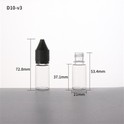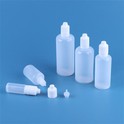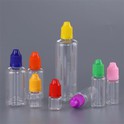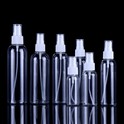Types of Manufacturing Techniques for Plastic Bottles
Apart from the general blow molding, other techniques bring about the formation of bottles like reheat and blow molding, co-extrusion blow molding, and injection molding.
These techniques will be detailed below:
Co-Extrusion Blow Molding
Multi-layered bottles are produced through co-extrusion blow molding. The layers are extruded together in the parison and fused into the final bottle. The Co-extrusion technique can be used to accomplish cosmetic effects such as adding soft-touch matte without needing an additional spraying procedure or preserving PCR on the outside layer of the bottle while using virgin material on the inside to safeguard the formula. This method can also be used to extend the barrier qualities of bottles in the same manner that it is used for tubes.
Extrusion Blow Molding
The parison forms vertically in the extrusion blow molding process. The wall thickness is controlled by adjusting the orifice size through which the parison extrudes. It then closes the mold over the parison as it hangs and transfers it to the blow molding station. This is where the bottle is made, as previously highlighted in the second phase of the RBM process. The problem of non-uniformity of the hanging parison is solved by varying the wall thickness. The weight of the formed portion would otherwise extend the hot and still-forming area above it. As the parison forms, the wall thickness increases to achieve a consistent thickness across the formation.
Injection Molding
Injection-molded bottles are uncommon, although the technique may be utilized to mold a particular purpose when extremely tight tolerances are necessary. Plastic is pumped into a closed mold between the cavity and core inserts during injection molding. The part cools as the pressure pulls the plastic into the hollow. The mold opens, releasing the final portion. Ejecting the part from the injection mold would require too much labor and expenditure for a narrow-mouthed container, such as a bottle. This is why injection-molded bottles are uncommon, and blown bottles are more common. If the wall is straight, or if the application requires threading on both the inside and outside of the neck, an injection molded "bottle" could be possible.






